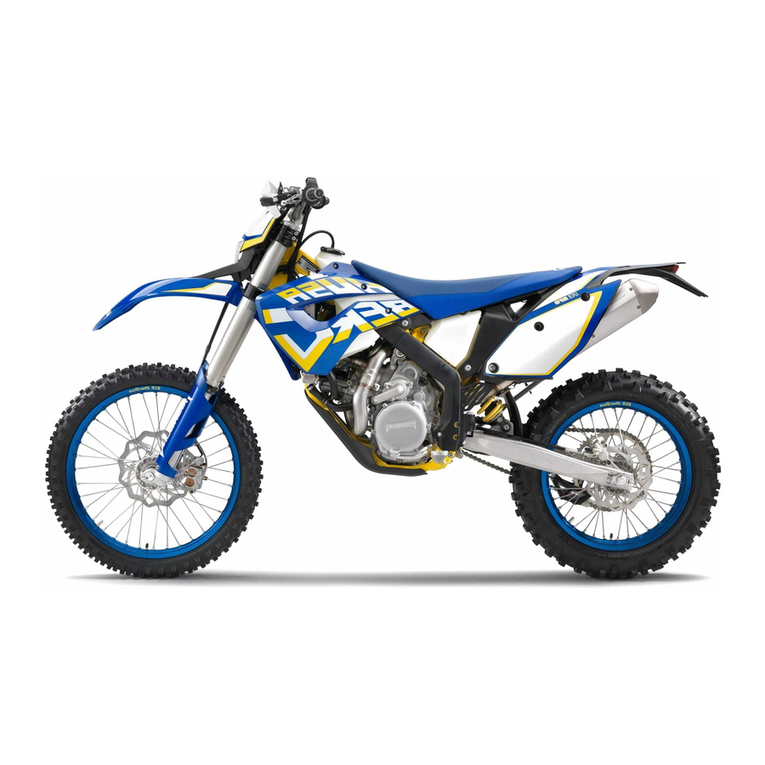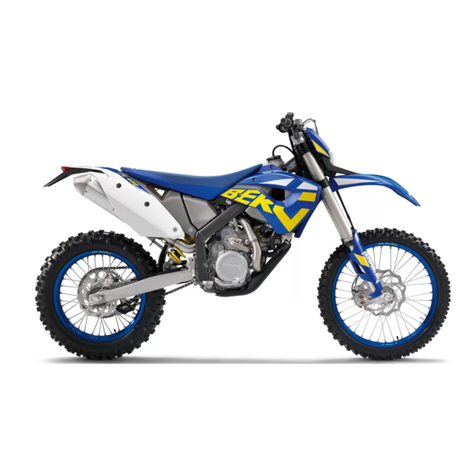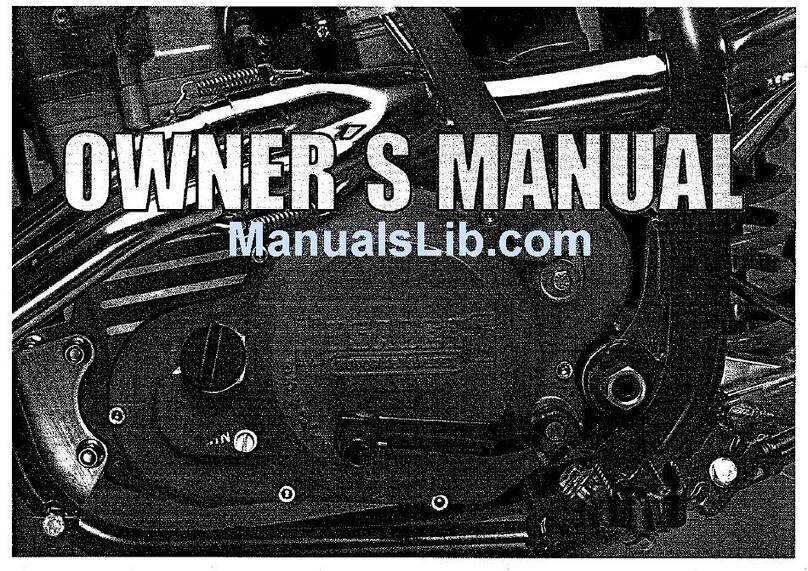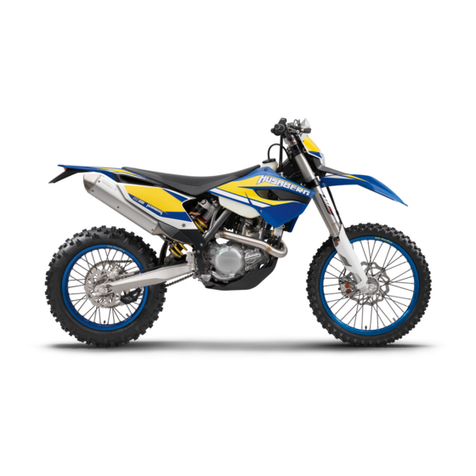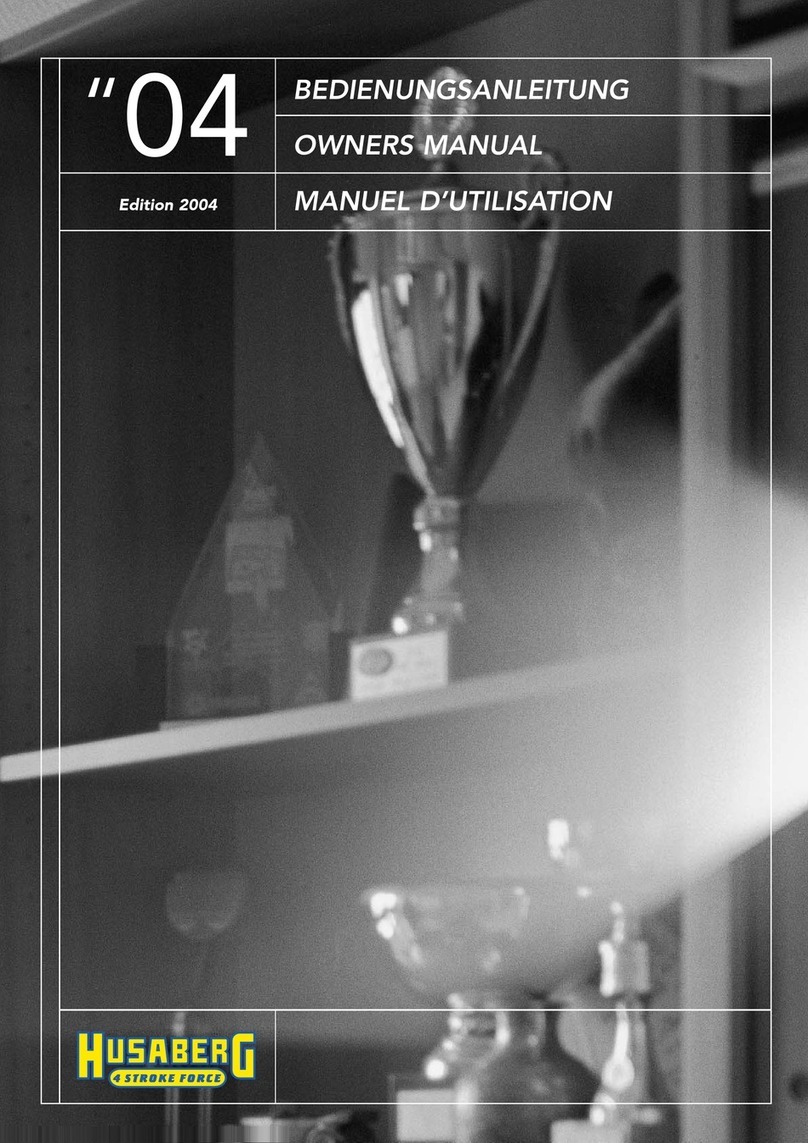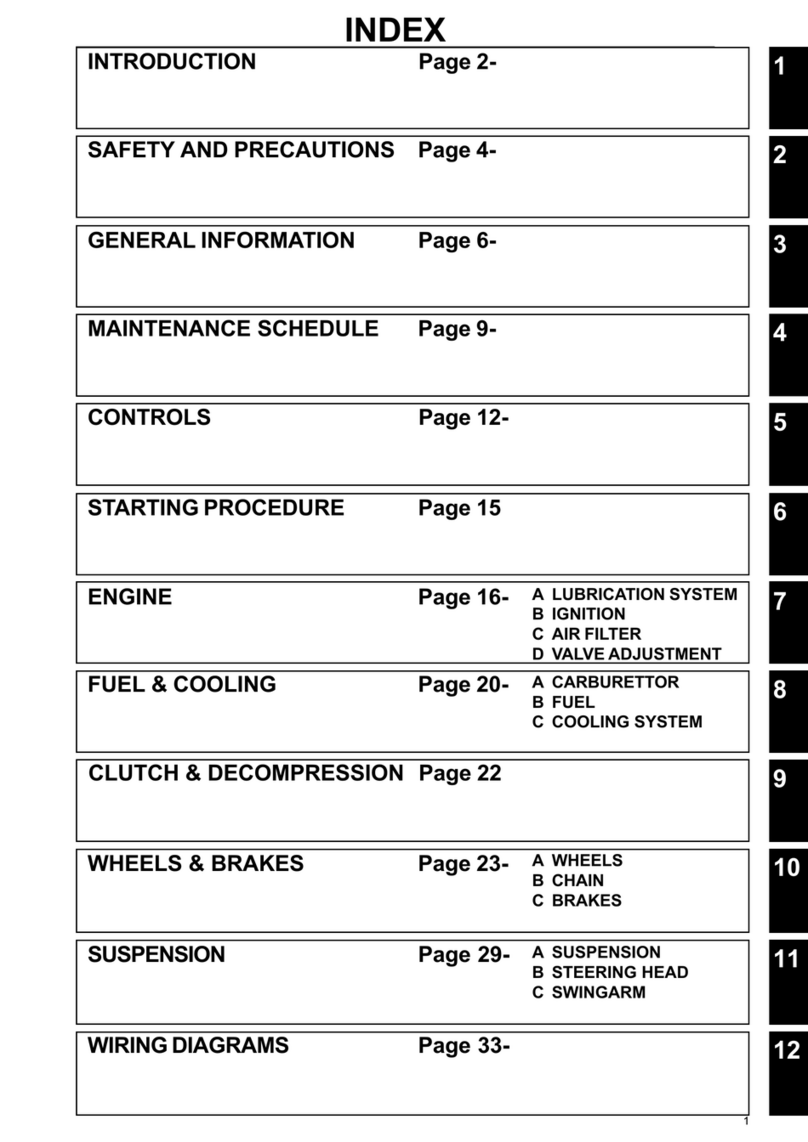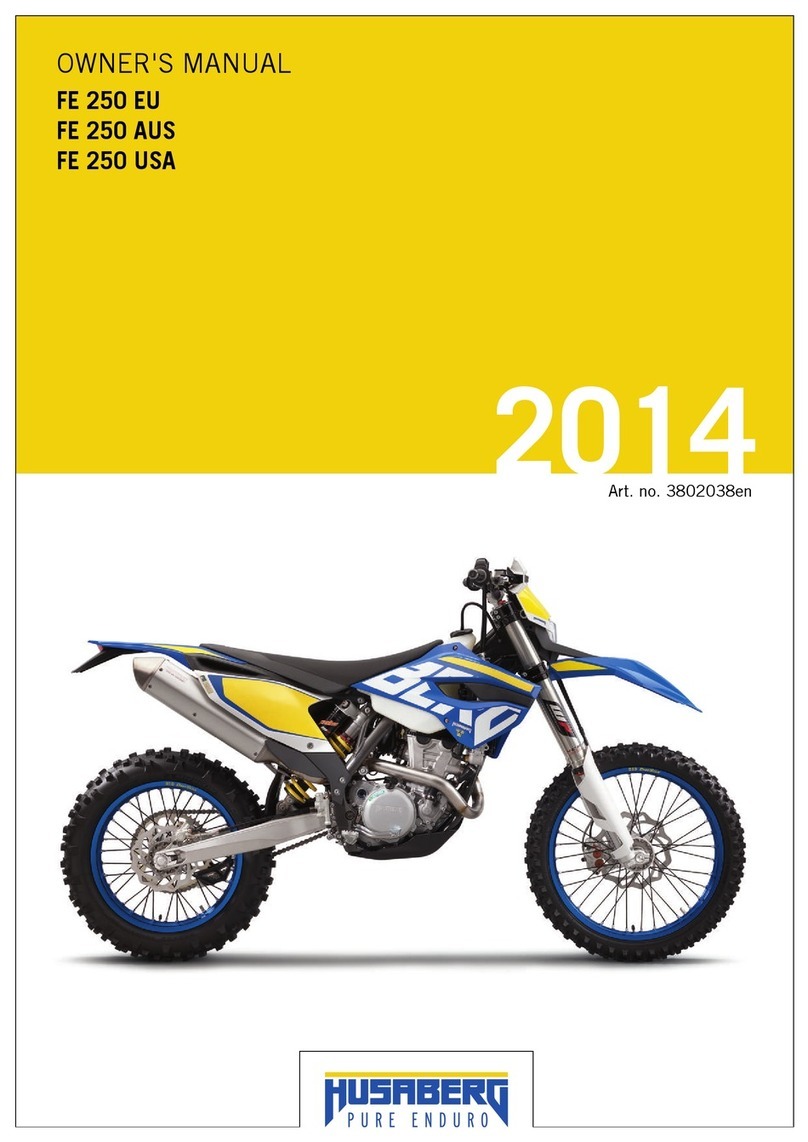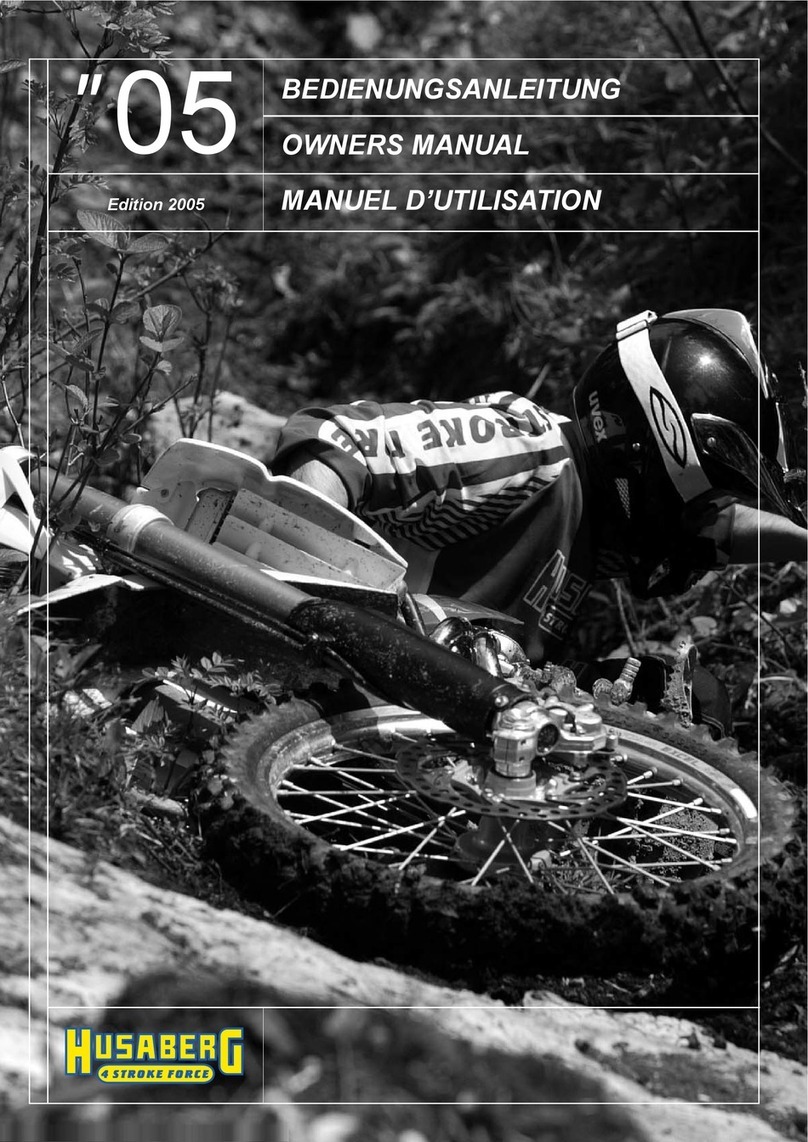
TABLE OF CONTENTS 2
TABLE OF CONTENTS
1 MEANS OF REPRESENTATION ..................................... 5
1.1 Symbols used ................................................... 5
1.2 Formats used.................................................... 5
2 SAFETY ADVICE........................................................... 6
2.1 Use definition - intended use ............................. 6
2.2 Safety advice.................................................... 6
2.3 Degrees of risk and symbols ............................... 6
2.4 Tampering warning............................................ 6
2.5 Safe operation .................................................. 7
2.6 Protective clothing ............................................ 7
2.7 Work rules........................................................ 7
2.8 Environment..................................................... 7
2.9 Owner's Manual ................................................ 8
3 IMPORTANT NOTES..................................................... 9
3.1 Warranty .......................................................... 9
3.2 Operating and auxiliary substances ..................... 9
3.3 Spare parts, accessories .................................... 9
3.4 Service ............................................................ 9
3.5 Figures ............................................................ 9
3.6 Customer service............................................... 9
4 VIEW OF VEHICLE ..................................................... 10
4.1 View of vehicle, front left (example) .................. 10
4.2 View of vehicle, rear right (example) ................. 11
5 SERIAL NUMBERS .................................................... 12
5.1 Chassis number .............................................. 12
5.2 Type label ...................................................... 12
5.3 Key number (TE EU/AUS) ................................ 12
5.4 Engine number ............................................... 12
5.5 Fork part number ............................................ 12
5.6 Shock absorber part number ............................ 13
6 CONTROLS................................................................ 14
6.1 Clutch lever.................................................... 14
6.2 Hand brake lever............................................. 14
6.3 Throttle grip ................................................... 14
6.4 Kill switch (TE EU/AUS) .................................. 14
6.5 Kill switch (TE USA) ....................................... 14
6.6 Horn button (TE EU/AUS) ................................ 15
6.7 Light switch (TE EU/AUS)................................ 15
6.8 Light switch (TE USA) ..................................... 15
6.9 Turn signal switch (TE EU/AUS) ....................... 15
6.10 Emergency OFF switch (TE AUS)...................... 15
6.11 Electric starter button (TE 250/300 EU/USA).... 16
6.12 Electric starter button (TE AUS) ....................... 16
6.13 Overview of indicator lamps (TE EU/AUS).......... 16
6.14 Speedometer .................................................. 16
6.14.1 Speedometer overview................................. 16
6.14.2 Activation and test...................................... 16
6.14.3 Tripmaster switch ....................................... 17
6.14.4 Setting kilometers or miles .......................... 17
6.14.5 Adjusting the speedometer functions ............ 17
6.14.6 Setting the clock ........................................ 18
6.14.7 Querying lap time ....................................... 18
6.14.8 Display mode SPEED (speed)....................... 19
6.14.9 Display mode SPEED/H (operating hours)...... 19
6.14.10 Display mode SPEED/CLK (clock)................. 19
6.14.11 Display mode SPEED/LAP (lap time)............. 19
6.14.12 Display mode SPEED/ODO (odometer) .......... 20
6.14.13 Display mode SPEED/TR1 (trip master 1)...... 20
6.14.14 Display mode SPEED/TR2 (trip master 2)...... 20
6.14.15 Display mode SPEED/A1 (average speed 1) ... 21
6.14.16 Display mode SPEED/A2 (average speed 2) ... 21
6.14.17 Display mode SPEED/S1 (stop watch 1)........ 21
6.14.18 Display mode SPEED/S2 (stop watch 2)........ 21
6.14.19 Table of functions....................................... 22
6.14.20 Table of conditions and menu activation ....... 22
6.15 Opening the filler cap...................................... 22
6.16 Closing the filler cap ....................................... 23
6.17 Fuel tap ......................................................... 23
6.18 Choke ............................................................ 23
6.19 Shift lever ...................................................... 24
6.20 Kick starter .................................................... 24
6.21 Foot brake lever .............................................. 24
6.22 Side stand...................................................... 24
6.23 Steering lock (TE EU/AUS)............................... 25
6.24 Locking the steering (TE EU/AUS) .................... 25
6.25 Unlocking the steering (TE EU/AUS)................. 25
7 PREPARING FOR USE................................................ 26
7.1 Advice on first use .......................................... 26
7.2 Running in the engine ..................................... 27
7.3 Preparing the vehicle for difficult riding
conditions ...................................................... 27
7.4 Preparing for rides on dry sand......................... 28
7.5 Preparing for rides on wet sand ........................ 28
7.6 Preparing for rides on wet and muddy
surfaces ......................................................... 29
7.7 Preparing for rides at high temperature and
slow speed ..................................................... 29
7.8 Preparing for rides at low temperature and in
snow.............................................................. 30
8 RIDING INSTRUCTIONS............................................. 31
8.1 Checks and maintenance steps when preparing
for use ........................................................... 31
8.2 Starting.......................................................... 31
8.3 Starting off..................................................... 32
8.4 Shifting, riding ............................................... 32
8.5 Braking.......................................................... 32
8.6 Stopping, parking............................................ 33
8.7 Transport ....................................................... 33
8.8 Refueling ....................................................... 34
9 SERVICE SCHEDULE ................................................. 35
9.1 Service schedule............................................. 35
9.2 Service work (as additional order) ..................... 36
10 TUNING THE CHASSIS .............................................. 37
10.1 Checking the basic chassis setting with the
rider's weight.................................................. 37
10.2 Compression damping of shock absorber ........... 37
10.3 Adjusting the low-speed compression damping
of the shock absorber ...................................... 37
10.4 Adjusting the high-speed compression
damping of the shock absorber......................... 38
10.5 Adjusting the rebound damping of the shock
absorber......................................................... 38
10.6 Measuring the sag of the unloaded rear wheel.... 39
10.7 Checking the static sag of the shock absorber.... 39
10.8 Checking the riding sag of the shock absorber.... 40
10.9 Adjusting the spring preload of the shock
absorber x.................................................... 40
10.10 Adjusting the riding sag x.............................. 41
10.11 Checking the basic setting of the fork ............... 41
10.12 Adjusting the compression damping of the
fork ............................................................... 42
10.13 Adjusting the rebound damping of the fork ........ 42
10.14 Handlebar position.......................................... 43
10.15 Adjusting the handlebar position x................. 43
